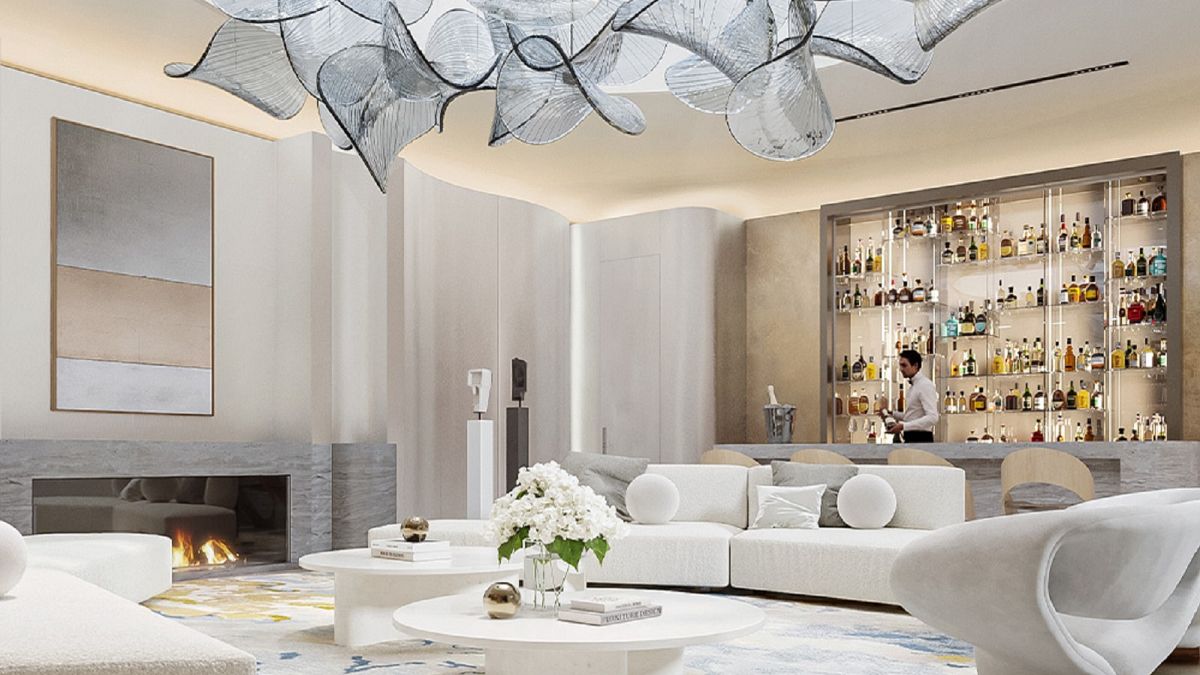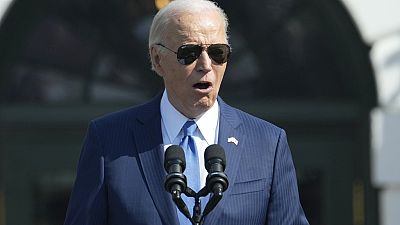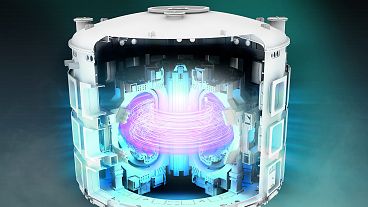'Existential angst' about the threat of a global conflict has led to a growing number of people investing in doomsday bunkers.
Is a luxury bunker a good investment of at least €7 million given the current geopolitical context in 2024? The ultrarich seem to think so.
Oppidum Bunkers, a luxury bunker development company based in Switzerland, says there has been a "steady increase" in enquiries about their products over the last few months.
Their customers are inspired more by pop culture than politics, having seen photos of the Hawaiian bunker owned by Facebook’s Mark Zuckerberg or watched the recent Netflix movie 'Leave the World Behind'.
Oppidum’s customers get to choose from various "minimalistic luxury" designs for their bunkers or create their own. Within each space can be a mix of living quarters with gyms, swimming pools, libraries, even an art gallery.
The company’s most affordable bunker, at €7.5 million is a 290 square-metre two-bedroom, three-bath loft hidden six feet underground.
The company’s goal is to create a "bespoke sanctuary" for their customers.
"[Our clients] can hedge against risks and provide peace of mind for their families without compromising their lifestyle," said Tom Grmela, Oppidum Bunkers’ head of communications.
Although Oppidum’s customers are not concerned about geopolitics, the new director of Germany’s Association of Towns and Municipalities reportedly is.
André Berghegger told the Funke media conglomerate that there was an “urgent need” to refurbish Germany’s 600 remaining Cold War-era bunkers in the wake of a broader geopolitical conflict.
He noted in particular that the threat level had been influenced by Russia’s war in Ukraine. In March, Russian President Vladimir Putin also warned that direct conflict between his country and NATO was a step away from World War III.
So, how then to prepare for a major geopolitical spillover? European experts say there are better ways than building a bunker, luxury or not.
'Existential angst' in a new nuclear age
Rafael Loss, a policy fellow with the European Council of Foreign Relations, told Euronews Next that this increase in bunker demand reminds him of the early days of the Cold War.
"The first years of the nuclear age brought a lot of imagination to a lot of people," Loss said, mentioning the duck and cover campaign that would teach children in schools how to survive a nuclear blast.
Many countries in Europe responded to the Cold War by building bunkers.
In Switzerland alone, there are nearly nine million shelter spaces in some 365,000 private and public shelters that have been built since the 1960s Cold War era.
The Cold War, which lasted from roughly the 1950s to the early 1990s, focused on the atomic bomb and the eventual deterrence of using them as a weapon of war, Loss said.
But now we’re entering a new "nuclear age," he said, that is quite different because there are more "nuclear states," with the US, China and Russia dominating the nuclear hierarchy and another few countries with an “unspecified number of deterrents".
In this context, Loss said there’s a new twist for why people might resort to bunkers.
People in the 2020s are now used to staying home from so-called "invisible threats," to their health and safety, first with the COVID-19 pandemic and now with the current geopolitical context, Loss continued.
"I think radioactive fallout is not too different from the [COVID-19] virus in that it is invisible and it has serious repercussions for health… and sort of bunker prepping mentality emerges from a situation like that," Loss said.
So even if, in his opinion, the risk of a nuclear conflict is low, the “existential angst” that people are feeling could cause them to want to retreat completely.
The bunker mentality is at the forefront of the minds of Oppidum customers. The main structure of the bunkers is made of concrete designed to withstand "static and dynamic loads, blast or shock waves, seismicity and other factors," the website says.
These blast-proof conditions even fit the NATO standards for blast shelters.
Russia’s regime 'doesn’t stop at Ukraine'
The best way to avoid a major geopolitical conflict is not to build a bunker but to demand your local representatives fund the Ukrainian war effort, according to Ian Bond, the deputy director of the Centre for European Reform.
Bond believes that politicians "will eventually take notice" that there’s more public support behind the war and will do something about it if pressured for long enough and by enough people.
"If we don’t do that, then the bunkers will become more useful and they will be closer to the frontlines," Bond said. "Building a bunker doesn’t stop you from the effect of war, what does is not having war".
There is a scenario, Bond continued, that if the Ukrainian defensive line falls, and Russia walks into Kyiv, there could be little to stop Russia from expanding elsewhere.
"Putin regards the weakness of the West [the US and Europe] as a reason to keep advancing," Bond said.
"The ambition of the Russian regime doesn’t stop at Ukraine, so the best way to do things is to defeat it where it is".
Bond pointed to Russia’s threats to Poland and Latvia specifically as possible indicators that Putin’s motive could extend outside Ukraine.
Putin told US television host Tucker Carlson in a February sit-down interview there is no desire from Russia to invade Poland or Latvia and called any mention of an invasion "fear-mongering".
Yet both countries, as well as the Baltic countries of Estonia, Latvia and Lithuania, have been asking for their allies to “wake up” and provide more NATO support.
'Rattling the nuclear sabre'
Despite all the angst, both Bond and Loss agree there might not be a wider conflict after all but rather that Putin is "rattling the nuclear sabre" to deter Europe from investing in Ukrainian defence.
And to some extent, Bond said Putin’s attempts are working.
The European Commission squeaked by a €50 billion EU aid bill in December after an initial veto from Hungary, and, just two weeks ago, the European Council gave Ukraine an additional €5 billion through the European Peace Facility to the war effort.
Media reports suggest there's now discord about what to do with an additional €4.4 billion in frozen Russian assets that could also be sent to Ukraine.
Ultimately, both say a conflict with NATO is not necessarily in Putin’s best interest.
"I don’t think anyone involved in this conflict does have an interest in escalating to that level," Loss said, referring to using nuclear weapons.
But, if there’s no deterrence by European politicians against any future Russia-NATO conflict, Bond said a bunker could ultimately become a good investment.



